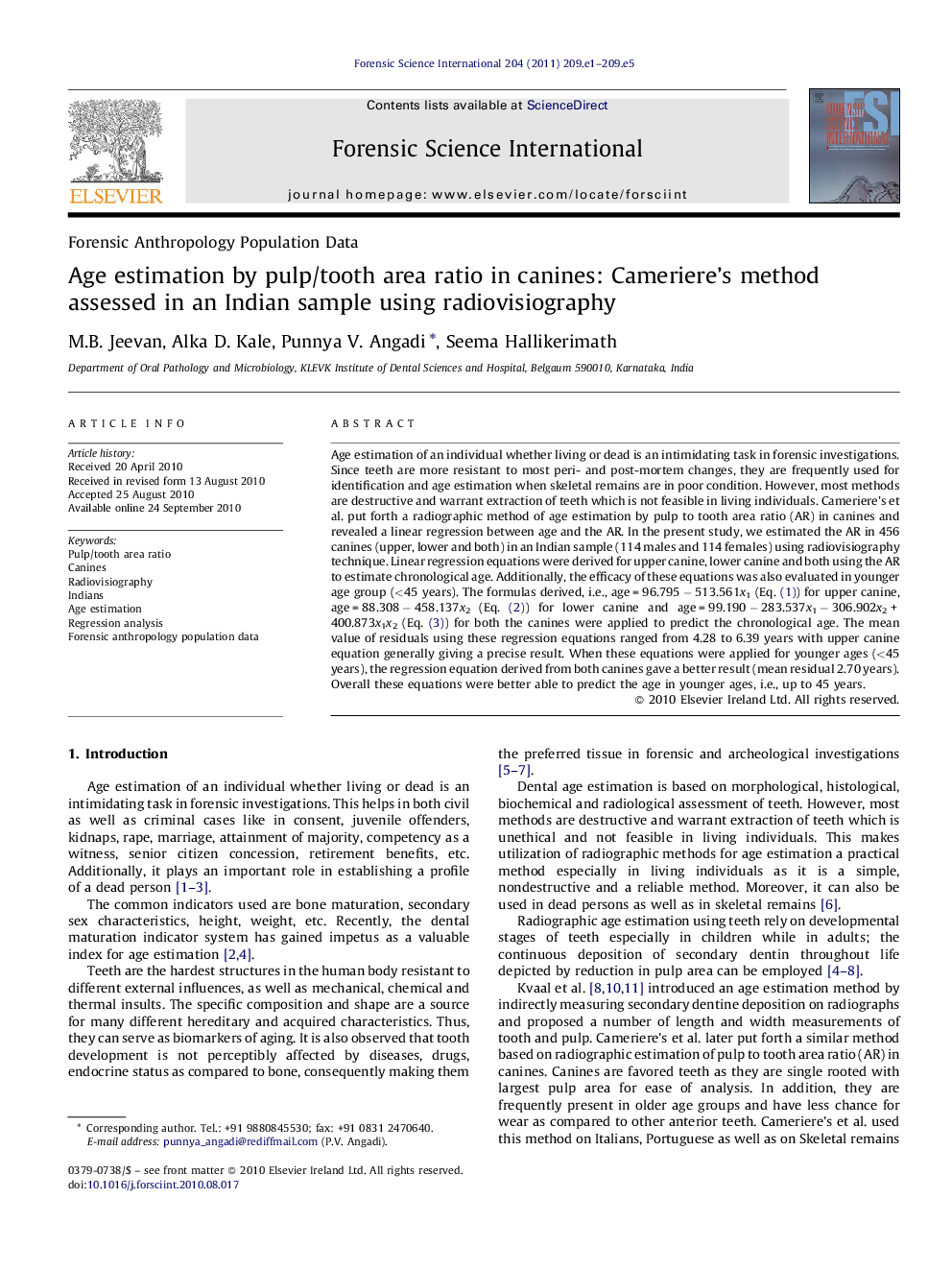| Article ID | Journal | Published Year | Pages | File Type |
|---|---|---|---|---|
| 96988 | Forensic Science International | 2011 | 5 Pages |
Abstract
Age estimation of an individual whether living or dead is an intimidating task in forensic investigations. Since teeth are more resistant to most peri- and post-mortem changes, they are frequently used for identification and age estimation when skeletal remains are in poor condition. However, most methods are destructive and warrant extraction of teeth which is not feasible in living individuals. Cameriere's et al. put forth a radiographic method of age estimation by pulp to tooth area ratio (AR) in canines and revealed a linear regression between age and the AR. In the present study, we estimated the AR in 456 canines (upper, lower and both) in an Indian sample (114 males and 114 females) using radiovisiography technique. Linear regression equations were derived for upper canine, lower canine and both using the AR to estimate chronological age. Additionally, the efficacy of these equations was also evaluated in younger age group (<45 years). The formulas derived, i.e., age = 96.795 â 513.561x1 (Eq. (1)) for upper canine, age = 88.308 â 458.137x2 (Eq. (2)) for lower canine and age = 99.190 â 283.537x1 â 306.902x2 + 400.873x1x2 (Eq. (3)) for both the canines were applied to predict the chronological age. The mean value of residuals using these regression equations ranged from 4.28 to 6.39 years with upper canine equation generally giving a precise result. When these equations were applied for younger ages (<45 years), the regression equation derived from both canines gave a better result (mean residual 2.70 years). Overall these equations were better able to predict the age in younger ages, i.e., up to 45 years.
Related Topics
Physical Sciences and Engineering
Chemistry
Analytical Chemistry
Authors
M.B. Jeevan, Alka D. Kale, Punnya V. Angadi, Seema Hallikerimath,
